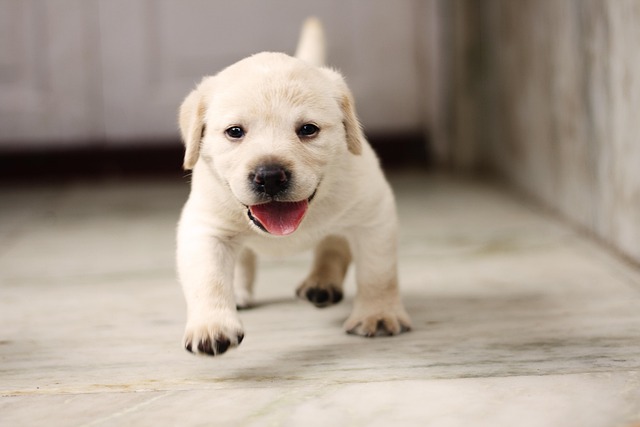
What is glaucoma in a dog?
You might notice your dog squinting more at mealtime or avoiding bright sunlight—these small changes could be early signs of a serious eye condition.
That moment when your doorbell rings in your Brooklyn walk-up and your 14-week-old Labradoodle, Benny, erupts into frantic barking. Your friend enters, and Benny either dives behind the couch or leaps up, nipping at their sleeves. Nailing introductions isn't just about manners—it's essential for creating a confident companion in dog-friendly communities where delivery drivers, neighbors, and visitors shape daily life.
The science behind successful introductions starts with understanding puppy psychology. Puppies process new people through associative learning – their brains link experiences with outcomes. When strangers loom overhead or grab suddenly (a common mistake!), cortisol floods their system, creating lasting fear pathways. Instead, leverage positive puppy introductions by pairing newcomers with high-value rewards before stress surfaces. Benny learns "new human = chicken rain!" This builds neural connections for calm curiosity, unlike scolding his barking which amplifies anxiety in tight apartment hallways or elevators.
Start before guests arrive. Keep Benny on leash in your living room with a treat pouch loaded with boiled chicken bits. Coach visitors through three simple rules: ignore Benny completely (no eye contact or reaching), scatter treats near their feet like confetti, and only interact if Benny approaches voluntarily. After five minutes of calm, have your guest crouch sideways (less intimidating) and offer treats from an open palm. This controlled approach respects Benny’s comfort zone while teaching positive associations.

Vaccination compliance anchors this process. Until Benny completes his puppy vaccination schedule – rabies shots are legally required by 16 weeks nationwide – skip crowded areas. Use home introductions as safe practice zones. During apartment potty breaks in designated relief areas, always carry waste bags; uncollected poop in Boston Commons risks $300 fines and neighbor disapproval.
Once vaccinated, level up to real-world practice. At quiet outdoor cafes, keep Benny 8 feet from passersby. Toss kibble when people walk past at a comfortable distance. If he freezes or tucks his tail, calmly increase space – never force interaction. Master "watch me" cues for elevator encounters where urban leash laws demand control. Reward calm behavior when Amazon drivers approach your door – this prevents barking that violates apartment noise regulations in cities like Chicago.
Cultural alignment is non-negotiable. Allowing strangers to overwhelm Benny violates modern consent norms deeply ingrained in US dog culture. Instead, teach guests the universal "Ask to Pet" rule. Advocate for Benny’s space if he retreats – a growl is communication, not defiance. In thin-walled apartments, polite greetings prevent noise complaints during important Zoom calls when packages arrive.
Watch for subtle stress signals post-introduction: lip-licking or sudden yawning means "I need breathing room." Celebrate tiny victories – one curious sniff instead of hiding. Updated vaccines enable patio brewery visits (display that rabies tag!), while consistent poop scooping maintains neighborhood goodwill. With thoughtful introductions, Benny evolves from doorbell-reactive pup to confident companion who greets your book club with relaxed tail wags – no jumping, no hiding, just joyful coexistence.

You might notice your dog squinting more at mealtime or avoiding bright sunlight—these small changes could be early signs of a serious eye condition.

Let’s set the scene: It’s a sweltering Phoenix afternoon—105°F outside—and you rushed your 2-year-old Lab mix, Cooper, on a quick walk to “get it over with.”

Let’s get real: You’re in your Miami apartment, watching your 3-year-old Corgi, Loki, struggle to climb the stairs to your second-floor unit.

Many dog owners brush off occasional scratching as just “dog behavior,” but persistent itching often signals something more—like a food allergy.

You might first notice your dog scratching more than usual—chewing at their paws until the fur looks thin, or rubbing their face against the couch nonstop.

Let’s be real: You’re standing in your Chicago apartment, watching your 3-year-old Beagle, Max, huff and puff just to climb onto the couch.